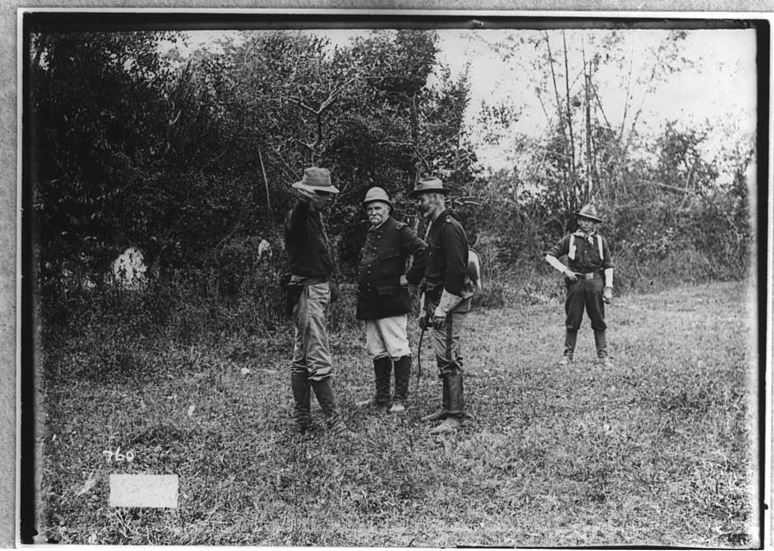Back then, due to storage and production problems, the Army went to wars with an assortment of uniforms and supplies. After the Civil War era, there was a vast reduction in soldiers, leaving the United States Army with large quantities of uniforms and equipment. At first, they thought that these would last for years. However, when the early 1870s came, many of the needed sizes were already being exhausted. This is why from the early 1870s to the 1890s, there was a general lack of uniformity in army clothing, especially for the soldiers in the field.
None of the lack of uniformity was fully resolved by the end of the 19th century, during the time when the US Army engaged with wars including the Spanish-American War, the Philippine Insurrection, and the Boxer Rebellion, which all occurred from 1898 to 1902. With this, what do you think was their standard uniform during the Filipino-American War? Read on to find out.
Soldier Uniform in the Filipino-American War
In the years that led up to these wars, the US Army wore a blue uniform, which included the M1884 full dress frock coat. In essence, it was an update of the Prussian Blue Campaign Uniform that was worn a generation earlier. The pattern brown cotton canvas fatigue uniform in 1884 was also introduced, and it showed to be more practical in the battles with the Native Americans.
When the war with Spain started, the small US Army wore the 1898-pattern khaki uniform blouse. During this time, there was still a lack of uniformity in the ranks. But in just a year, there were no less than four patterns of the khaki field service coats being issued. Some of these coats even had the British Pattern 95 Foreign Service Tunic, which was obtained by the US Army in Hong Kong.
The Model 1898 Khaki uniform was first made in June 1898. It was made in response to the needs of American soldiers who were fighting in tropical climates, such as Puerto Rico, Cuba, and the Philippines. The uniform’s collar, false cuffs, and epaulets were made in the branch-facing color of each soldier. The buttons of the uniforms corresponded to the assigned branch of each soldier, especially for officers.
Due to production issues, the uniforms were only given as soldiers deployed. With this, some units were still given the dark blue M1883 sack coat and matching blue trousers. A lot of soldiers that served in Cuba chose to remove their wool blouses and instead wore light campaign shirts in dark blue color. They wore the same shorts in the Philippines. After the war with Spain, US soldiers started to sew on rank chevrons.
During these times, the material of the uniforms also shifted from wool to cotton. The Spanish-American War and subsequent Philippine Insurrection was the last war wherein the US Army wore the blue into the field as part of the combat uniform.
The Headdress Grand Army of the Republic
After the Civil War era, both the Hardee hat and the kepi were replaced. The US Army followed other countries in adopting a dark blue and black spiked helmet. They chose the one that is close to the design of the British Home Service helmet than the German pickelhaube. The helmet stayed as part of the dress uniform, but it was also sued in garrison duty in a limited capacity. The felt campaign hat, on the other hand, was used as the de facto headdress of the US Army in the field.
The hat reflected the civilian headdress of the era. The M1885 was widely used during the Spanish-American War, and it became the standard cover for all ranks. It could be shaped in many ways, but it was usually formed with a regulation “fore and aft” indentation.
The M1887/89 pattern sun helmet was worn by rear-echelon troops and as well as some officers. This was made out of cork and has the same design as the British and French pattern sun helmets. Even though there was a misconception, the American cork helmets did not come from Great Britain. They were made by Horstmann Brothers and Company of Philadelphia, which was a popular dealer and manufacturer of military uniforms.
Aside from the standard undress and daily headdress outside the field, there was also the M1895 forage cap, which had a rounded visor, making it called “the train conductor’s cap.” However, neither the forage cap nor the sun helmet was liked by the troops.
Conclusion
We can say that the experiences of soldiers in wars before are indeed very different from what is being experienced at the present time, especially when it comes to uniforms. Today, it is very easy to obtain materials and mass-produce pieces of clothing and accessories for soldiers. Their uniforms today also come in many styles and designs, and each of them has specific advantages and purposes. We hope this article helped you learn more about the standard uniform of a soldier in the Filipino-American War.
